





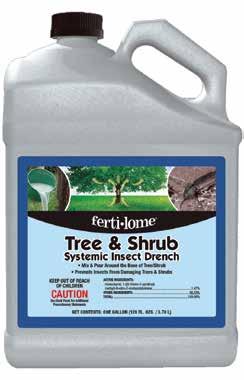

•
•
®









•
•
®
Landscapes
Joyce Bruno & Robert Weaver
Publisher and Editor
Robert Weaver Columnists
Abby Lapides
Sugar Creek Gardens
Steffie Littlefield
Edg-Clif Winery
Samantha Zale
Greenscape Gardens
Scott Woodbury
Cacalia Nativee Garden Design
Printing: Breese Publishing, Breese, IL
The Gateway Gardener® is published 7 times/year by Double Dig Communications, Inc. to promote enjoyable, successful gardening and livable landscapes in the St. Louis greater metropolitan area. The magazine is distributed free to the public at designated garden centers, nurseries, garden gift shops, lawn equipment rental, repair and sales establishments, and other locations supporting sound gardening, lawn and landscaping practices.
Please send letters-to-the-editor, questions, event announcements, editorial suggestions and contributions, photos, advertising inquiries and materials, and any other correspondence to:
The Gateway Gardener Magazine® PO Box 220853 St. Louis, MO 63122 Phone: (314) 968-3740
info@gatewaygardener.com www.gatewaygardener.com
The Gateway Gardener is 20 years old this month. And this gateway gardener is 20 years older than he was when his magazine debuted in 2005. On page 16, I take time to reflect on the people, places and events the magazine has allowed me to meet and experience. Here, I just want to talk about the garden.
I was 54 years old, and despite being only a few years removed from open-heart surgery (or maybe because of its rejuvenating results), I was an enthusiastic and energetic gardener. I had always dabbled in planting things here and there, always enjoyed being outdoors, but with the newly launched Gateway Gardener, I felt the responsibility of not just ‘talking the talk”, but wholeheartedly “walking the walk!”
So I began tearing up turf and adding new garden spaces. Each space had a theme. My first big addition was a “Plants of Merit” demonstration garden extending along the front public walkway, featuring dozens of plants from that Missouri Botanical Garden program promoting the best plant performers for our region. Next, I ripped up an expanse of spreading bamboo and English ivy and installed what I called my “Petite Prairie”, an 800 sq. ft. area dedicated to Missouri native sun-loving perennials and shrubs. Later, a shady-area-turned-sunny







made way for a bird-garden including a small water bubbler and several native berry-producing shrubs. Still later I transformed a honeysuckle hedge into a native shrub hedge, then turned another shady carpet of foreign groundcover into a tiny woodland garden with native woodland plants.
Fast forward 20 years. Today, at age 74. I have no plans for any more additions. On the contrary, Mary keeps suggesting I make subtractions. Sometimes I listen to her. A couple years ago, I pulled out the particularly weed-prone and maintenance-needy strips of plants bordering the front sidewalk to the house. I also quit the spring cleanout and mulching routine, now “leaving the leaves” to do their job.The vegetable garden— always a futile battle against squirrels anyway—was downsized this year to a few containers on the deck.
Still, there’s enough to do, but
achievable at a slow pace and reduced hours. And, like the work I do publishing The Gateway Gardener, it’s work--and the benefits of that work--I enjoy. I like watching and photographing the butterflies, bees and birds that are attracted to the flowers and seed heads in the Petite Prairie, much more than 20 years ago. I enjoy the birds that come to bathe and refresh in the bird garden’s bubbler, and especially the flocks of cedar waxwings that descend regularly upon its winterberries and serviceberries in season. Twenty years ago, I’d never seen a cedar waxwing or any of the many warblers that now visit the bird garden. And 20 years ago, I rarely visited the area of the yard once covered by English ivy and wintercreeper. Now, I enthusiastically anticipate that spot in spring when the trillium, Jacob’s ladder and other spring ephemerals provide the tiny woodland garden a new life of color and pollinator activity.
Since 2005, the magazine cover has promised “Enjoyable Gardening and Easy-Care Landscapes”. These days I’m seeking more of the latter while still appreciating the former.

by Abby Lapides

Monarch butterflies need milkweed, the host plant or food source for monarch caterpillars, to survive. But what other plants do they love? Learn about some of the best flowers that monarch butterflies can’t resist.



Monarchs adore blazing star, Liatris spp. One of my favorites, meadow blazing star Liatris ligulistylis also attracts hummingbirds. The tall stalks of soft purple puffs begin to bloom in midsummer. Expect to see monarchs hanging off these stately wands. All blazing star thrive in sunny spots and are drought tolerant once established.




Enjoy monarch butterflies fluttering through your garden when you plant cut leaf coneflower, Rudbeckia laciniata. This longblooming butterfly magnet lights up the garden with its showy golden yellow flowers and glossy, deep green, deeply cut leaves. Its long stems and long-blooming nature make this an excellent selection for cut flowers. A long bloomer, you can expect flowers for 8 weeks in summer, beginning around midsummer and continuing into fall. This underused plant is ideal for the middle to back of the garden, where its tall stems and shrubby foliage are best appreciated.
Forming into an almost perfect dome of flowers that are magnets to Monarch butterflies, ‘Monarch Magic’ floss flower, Ageratum delights for months on end. Drought and heat tolerant, ‘Monarch
Abby Lapides is owner and a speaker at Sugar Creek Gardens Nursery. She has degrees from the University of Missouri, and is a member of the Landscape and Nursery Association of Greater St. Louis. You can reach her at (314) 965-3070.



Magic’ is easy to grow and perfect for containers, hanging baskets, or in the ground. Not to be confused with the aggressive native floss flower. This non-spreading plant behaves itself and dies out once temperatures drop below freezing.
Not just for monarchs, Joe pye weed, Eutrochium or Eupatorium,

YOUR ONE-STOP-SHOP FOR cont’d on next page


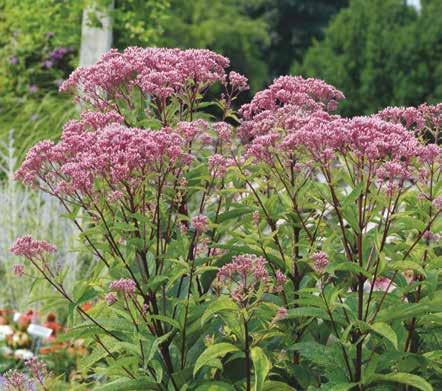
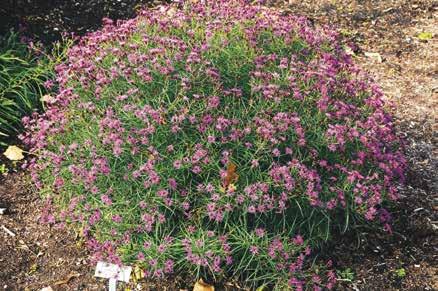
attracts all types of butterflies and pollinators. The large, airy clusters of mauve-purple flowers create landing pads for butterflies. Our natives can get quite large, some up to 8 feet! There are many cultivars that stay more petite, like the adorable ‘Euphoria Ruby’. Although tolerant of various growing conditions, Joe Pye weed excels in boggy areas.
While asters are a top choice for attracting butterflies late in the

season, the dwarf selection of ironweed, Vernonia, is one that I love for monarchs and garden design. Featuring clusters of vibrant purple flowers in late summer and fall, the introduction from Chicagoland Grows ‘Summer Swan Song’ forms into a perfect mound for the sunny garden. Its ferny foliage adds interest before the big show in fall. Native ironweed typically grows up to 6 feet tall, whereas ‘Summer Swan Song’ grows to a more petite 3 feet.
Zinnias may be one of the best all-purpose sun annuals available. Long blooming, heat tolerant, and loved by tons of wildlife. Monarchs love their nectar-rich flowers, goldfinches nibble on the spent flower seeds, and we love the super showy flowers. While Zinnias are all beautiful, the Profusion and Zahara series, which are smaller in size and extremely floriferous, are more disease resistant than other types.

Butterflies sun themselves on rocks and need a water source. Avoid spraying any pesticides around the area. If you have any unwanted critters, it’s best to hand remove them or use cotton balls with rubbing alcohol. Put any overripe fruit out on plates or in old suet feeders - the butterflies love the sugar. A “butterfly beach” made from an old bird bath basin filled with water and sand.










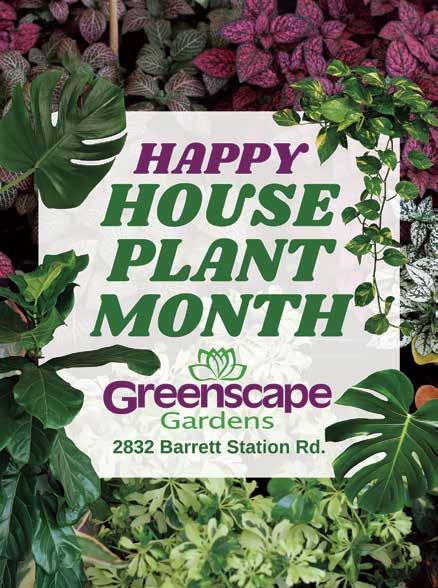

by Scott Woodbury
To help us celebrate our 20th Anniversary, Scott offered to write about the 20 things he loves about native plants. We teased readers with the 1st 5 entries in our Summer 2025 issue. Here are the remaining 15! (To read or reread the first 5, visit our digital publishing site at issuu.com/thegatewaygardener.
#6
If you have an affection for edible native plants, as I do, here are two other wild edibles to consider: mulberry (Morus rubus) and blackberry ( Rubus sp.). I like to use them to make caipirinhas cocktails, the national beverage of Brazil (made with cachaca, which is distilled sugarcane juice). Recipes are easy to find. I modify the recipe by muddling blackberries along with the limes to make a colorful, yummy adult beverage. Blackberries have wicked thorns, so you may consider thornless varieties for your garden at home. I saw some recently for sale at Maypop and Bowood Farms.
#7
The most amazing shows are performed on the tiniest stages. I’m referring to bees who perform buzz pollination on rose petals, a vibratory dance worth seeing. At
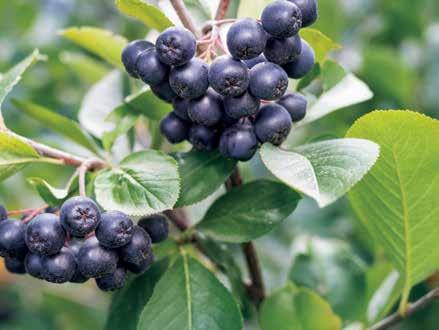



Bumble Bee and Carpenter bee exploring common evening primrose.
home in Brentwood, I grow Carolina rose (Rosa carolina) in the trampoline garden, where it meanders all over the place, popping up in blank spaces and attracting bees.
#8
I love that showy evening primrose (Oenothera speciosa) reminds me of bison every time I see it growing. I saw this plant growing at the Tallgrass Prairie National Preserve in

George Catlin painting of Buffalo crossing the White River.
Kansas, marking the spot where buffalo wallowed 150 years ago. Here is a summary from George Catlin on encountering a massive herd of bison in 1832. “…we met the most immense
herd crossing the Missouri River—from which we were highly delighted to make our escape. It was in the midst of the ‘running season,’ and we had heard the ‘roaring’ of the herd (several miles from them). When we came in sight, we were actually terrified at the immense numbers that were streaming down the green hills on one side of the river, and galloping up and over the bluffs on the other. The river was filled, and in parts blackened, with their heads and horns, as they were swimming about . . . I rose in my canoe, and by my gestures and hallooing, kept them from coming in contact with us, until we were out of their reach.”
#9
I have a love-hate relationship with cup plant (Silphium perfoliatum). I’ve seen indigo buntings drinking dew that pools in the cups formed by the plant’s perfoliate leaves. I’ve even seen strands of American toad eggs in there. What bugs me is how aggressively this plant spreads in the garden from seed. Every seed is fertile and has the power to take over.

A goldfinch checks for water, seeds and bugs among the cup plant.
#10
Certain plants are super-foods for pollinators, including milkweed (Asclepias spp.), mountain mint (Pyncthanthemum spp., blazing star (Liatris spp., ironweed (Vernonia spp., goldenrod (Solidago spp.), aster (Symphyotrichum spp.), and Joe pye (Eutrochium spp.). Two of these super-food plants are willowleaf aster (Symphyotrichum praealtum), attractive to monarch butterflies in late summer, and aromatic aster (Symphyotrichum oblongifolium), which supports a wide range of butterflies and bees in fall. I love them both, though willowleaf aster is an aggressive, suckering plant that belongs in grassland restorations or large, steep hillsides for erosion control rather than formal native gardens
#11
My favorite jam is made from wild plum (Prunus sp.). It’s tart and rich in flavor. Acquiring a basket of plum fruits, though, is easier said than done. Plums trees require elbow room and are self-infertile. You need at least two to three

Scott Woodbury was the horticulturist at Shaw Nature Reserve for 30 years and stepped down from that position in June 2022. He continues to work on contract for Shaw Nature Reserve to carry out native landscaping education and has launched his own business called Cacalia: Native Garden Design and Wilding. Find suppliers of aquatic and other native plants and services, native garden plans, educational programs, and much more at grownative.org.
seedlings to get effective crosspollination and fruit production. The other thing that’s tricky is that most plum species produce fruits the size of a nickel. That’s a lot of work pitting fruits. I find that planting big fruit plum (Prunus mexicana), which has fruit the size of a quarter, makes fruit harvest more productive.
#12
Seldom does an opportunity arise where horsetail (Equiisetum hyemale) can be used in the garden. It has highly aggressive runners, overcoming any plants growing nearby, except trees and shrubs. I recently designed a garden for a modern house that had a unique architectural feature: a concrete wall that formed an enclosed box with the house on the back side. It was the perfect place for horsetail. I considered giant cane, but horsetail seemed to be a better scale for the house. Who doesn’t love horsetail?
#13

Some things are worth the trouble. Ponds and water gardens are just such a thing. They attract more

9814 Pleasant Hill Rd Jefferson City MO 65109 www.mowildflowers.net mowldflrs@socket.net 573-496-3492
Meet us at one of these St. Louis locations. Give us your order at least five days before the sale, and we will bring it to the sale.
Kirkwood Farmer’s Market, 150 East Argonne, Kirkwood, MO 63122. Pre-orders and on site shopping. August 30 & September 6, 8 am to 4 pm.
Shaw Nature Reserve - Glassberg Pavillions, 307 Pinetum Loop Rd, Gray Summit, MO 63039. Event: 2025 Fall Wildflower Market, Sept. 5, 3 pm to 7 pm , MOBOT members - FREE admission. Non members - $5 or ($10 per vehicle).
Tower Grove Park - Roman Pavilion, 4378 Northwest Dr, St. Louis MO 63110. Bring Conservation Home Expo & Native Plant Sale. Sun., Sept 21, 10 am to 2 pm.
Roeslein & Associaes, Inc., 9200 Watson Rd, St Louis, 63126. MO Prairie Foundation Native Plant Sale, Thurs, Sept. 25, 3:30 pm to 6:30 pm.
Weldon Spring Site Interpretive Center. 7295 MO-94, St. Charles, MO. Pollinator Palooza. Sept. 27, 10 am to 3 pm
Missouri Botanical Garden, 4344 Shaw Blvd. St. Louis, Mo 63110. Event: Best of Missouri Market, Admission charge varies, details: mobot.org. Oct.3,4,&5
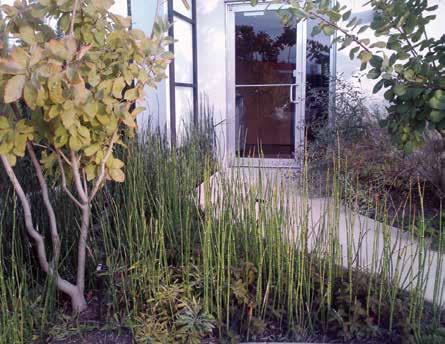
wildlife than any other landscape feature, especially dragonflies. Though I don’t have room here to describe the complexities of pond gardening, know that if you introduce a water feature with native emergent aquatic plants like pickerel plant (Pontederia

cordata), you will attract dragonflies. They arrive in spring and summer, mate, lay eggs on the water surface, then spend the rest of their adult life lording over your garden. What could be better? They are like silent flying jewels, flitting around from flower to flower, competing with the other dragonflies. What happens to the eggs? They drop to the bottom, morph into a sinister-looking larvae, live there a year, and then emerge the following season by crawling out from the water on a leaf blade, where they then split open and emerge as adult dragonflies: beauty from a beast.
#14
Do you know the kind of native plants that give native landscaping a bad image? The ones that spread around from seed (wildings) and make the yard look more natural. I love those kinds of plants. But they need to be used correctly for the best effect. Unleash any of them in a conventional garden and your workload will increase, as seedlings migrate all over the place. But include them together in a seeded or planted project, keep it weeded for two years, and you will be blown away with an incredibly low-maintenance and beautiful, diverse mosaic garden. Plants that work well for this include foxglove
beard tongue (Penstemon digitalis), purple Joe pye (Eutrochium purpureum), Drummond aster (Symphyotrichum drummondii), slender mountain mint (Pycnanthemum tenuifolium), pasture rose (Rosa carolina), purple coneflower (Echinacea purpurea), showy goldenrod (Solidago speciosa), woodland knotweed (Persicaria virginiana), black-eyed Susan (Rudbeckia hirta), star coreopsis (Coreopsis pubescens), sedges (Carex spp.), bottlebrush

Scott’s “trampoline garden” in year 2 already blooms with native purple coneflower, Joe pye, black-eyed Susan among others.
grass (Elymus hystrix), hairy mountain mint (Pycnanthemum verticillatum var. pilosum), bee balm (Monarda spp.), skullcap (Scutelaria spp.), Indian plantain (Arnoglossum atriplicifolium), garden phlox (Phlox paniculata), golden Alexander (Zizia aurea), zigzag goldenrod (Solidago flexicaulis), and many more. Check out my how-to trampoline garden articles in past issues, numbers one and two. Number three will be coming out later this year. First year it sleeps, then it creeps, and then it leaps.
I love a plant that anybody can grow: a real equalizer. Rose turtlehead (Chelone obliqua) does that. It grows in sun, shade, in wet rain gardens, and can tolerate dry conditions as well. Keep in mind that the more sun you give it, the fuller it will be. In shady gardens, the stems are more spread out and can

colonize with other plants like hop and palm sedge. It comes back year after year, is a long-term performer, and will grow in clay soil.
#16
Tall plants are feared or forgotten in the landscape. The tallest, and my favorite, is hollow-stemmed Joe pye (Eutrochium fistulosum), topping out at 8+ feet. Indian plantain (Arnoglossum atriplicifolium) is similar. Both are whimsical, towering plants that look like an obelisk at Bellefontaine Cemetery, yet are casual, and amateurish, in a good way (I don’t like rules).
#17
September is persimmon harvest season, followed closely by pawpaw harvest season. Both fruits are generally harvested from the ground. Persimmon (Diospyros virginiana) isn’t ripe until the fruits fall from the tree. It’s worth planting a cultivar, as fruits are much larger and therefore more productive for food harvest. Pawpaw (Asimina triloba) fruits are usually too high off the ground to reach, and so shaking the trunk will release them when they’re ripe. Watch out—they come down with a thud. A Foley‘s food mill will help you separate persimmon pulp from the seed. Pawpaw pulp is more easily
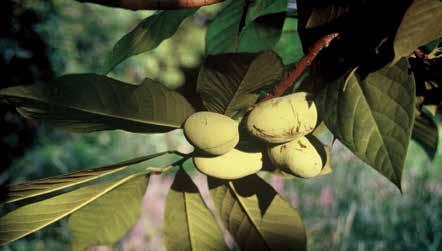
separated by hand. Pulp can be measured out in one or two cup servings and frozen for years. My favorite recipes are pawpaw ice cream (from Bon Appétit magazine) and persimmon pudding (from the Field of Greens cookbook).
#18
I love rock pink (Talinum calycinum), but rarely find a place to grow them successfully. One such place is in a well-drained container, filled with a gravelly soil mix or cactus mix. Another place is in the cracks between a flagstone walkway in full sun. As long as the steps are set in gravel, and not in concrete, you should have success. Plant them randomly along the walkway, and they will seed freely in year two.

#19
Native annuals aren’t used enough, and are barely available commercially. I’ve been begging nurseries to grow native annuals in six packs, so far to no avail. Red whiskers, aka. clammyweed (Polanisia dodecandra), is a very showy plant that is easy to grow. It gently spreads around the garden, then comes back year after year, as long as you learn to recognize the seedlings and don’t

use a lot of mulch. It is a magnet for clearwing hummingbird moths. Other native annuals worth a try include western wallflower (Erysum capitatum), narrow-leaved sneezeweed (Helenium amarum), and palafox (Palafoxia callosa).
#20 Spiderwort seeds resemble the Eye of Horus, an ancient Egyptian symbol representing protection, healing, and regeneration. I love looking at them through a hand lens. Spiderworts are a must in any garden, especially during these uncertain times. If nothing else, you can eat the fresh leaves in a salad, enjoy their cheery spring flowers, and connect with ancient Egypt in the privacy of your own backyard. The universe is speaking…
Happy birthday Gateway Gardener, and happy gardening!

by Samantha Zale

September isn’t just the start of pumpkin spice season—it’s also officially Houseplant Month! This is the perfect time to revel in your love for leafy greens, sprucing up your indoor jungle and celebrating the joy plants bring to our lives. Whether you’re a seasoned plant parent or a budding enthusiast, September offers the perfect excuse to turn your home into a lush, vibrant sanctuary. Here’s how to make the most of Houseplant Month while having a little fun along the way.
As summer transitions into fall, September is the sweet spot where nature’s rhythm slows down. It’s the ideal time to nurture your indoor plants as they prepare for their own seasonal changes. Plus, for many of us, the cozy vibes of autumn pair perfectly with the calming presence of greenery. Declaring September as Houseplant Month is like giving a shoutout to the unsung heroes of home décor and well-being.



Houseplant Month is your green light to refresh your plant collection! Have a pothos that’s taking over your windowsill?

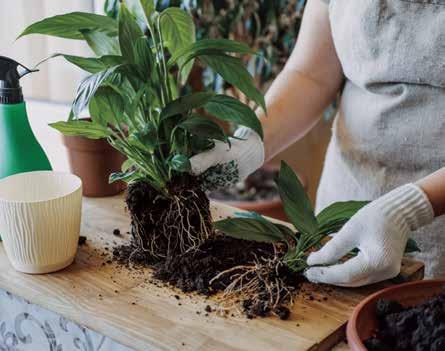
September is great for propagating cuttings and sharing them with friends. Maybe your fiddle-leaf fig needs a new pot? This is your cue to repot and give its roots more room to grow. Take stock of your current collection and see where you can add variety. Love big, bold plants? Try a monstera or bird of paradise. Prefer smaller, low-maintenance options? Go for succulents, snake plants or pilea. Shopping for new plants can be an adventure— plus, who doesn’t enjoy bringing home a new leafy friend?
Care tipS for the Changing SeaSon
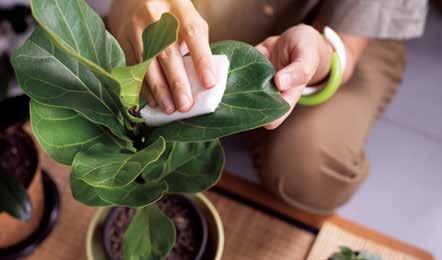
September is a transitional month, and your plants will feel it, too. Days are getting shorter, so be mindful of how much light your plants are receiving. If they’re not getting enough, consider moving them closer to a window or investing in a grow light. Reduce watering as temperatures drop; most plants need less water in the fall and winter. Check the soil before watering and only add moisture when it feels dry about an inch down. While you’re at it, give your plants a good cleaning—wipe down those dusty leaves to help them breathe and photosynthesize. Remember 50 °F is the minimum temperature that many houseplants can tolerate comfortably.
Celebrate With houSeplant themed fun
Why not throw a Houseplant Month party? Invite your fellow plant lovers over for a plant swap, where everyone brings cuttings or small plants to trade. It’s a fantastic way to diversify your collection while spending time with friends. Another fun idea is to host a DIY plant pot painting session. Pick up some standard
terracotta pots, paints and brushes, and let everyone get creative. Not only will you have a blast, but you’ll also leave with a personalized container for your plants.
Houseplants make excellent gifts, and Houseplant Month is a great opportunity to spread the greenery. Surprise a friend, neighbor or family member with an easy-care plant like a snake plant or ZZ. Include a cute note that says something like, “Happy Houseplant Month—here’s a little green to brighten your day!” Houseplant Month is a celebration of all things green, leafy and life enriching. It’s a time to give your plants some extra love, expand your collection and share your passion with others. So, grab your watering can, find a new leafy friend and embrace September with all the planty enthusiasm you can muster. After all, a home filled with houseplants is a home filled with happiness! Visit your local garden center during houseplant month.
Happy Gardening!
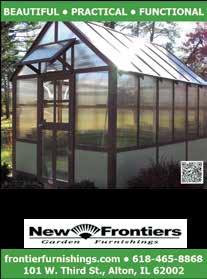
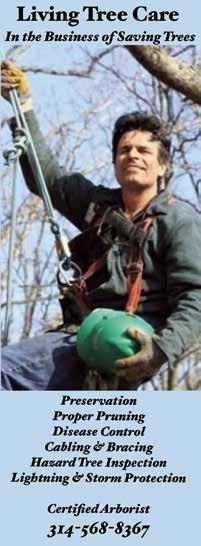

Text and photos by Linda Ballard
Most gardeners would agree: You never quite know what you’re getting into when you put in a small garden. In 1985, University City neighbors Jane Schafer, Mary Ann Shaw, and Susan Hopper decided to plant six hundred daffodil bulbs to brighten the median in an intersection near their homes. At the time, it seemed like a big project. This year marks the 40th anniversary of that fall day when three friends took the first steps towards founding what became U City in Bloom (UCB). From this modest start, U City in Bloom has grown into a volunteerbased, not-for-profit organization that designs, plants, and maintains scores of public garden locations throughout University City.

Over the years, the projects undertaken by UCB have developed the extensive gardens surrounding the City’s historic Civic Plaza; its recreation center, Centennial Commons; and

the University City Public Library, as well as dozens of smaller neighborhood plantings in quiet corners or near busy street intersections. Larger gardens include benches and walking paths within them. Entrance gardens greet students at all the Public Schools, and some elementary schools incorporate vegetable gardens where children learn to grow the food they eat. UCB gardens welcome visitors near the major thoroughfares entering the City, while large planters enhance the Delmar Loop entertainment district and the Olive Boulevard business corridor.
U City in Bloom emphasizes the beauty and importance of native plants in their gardens and promotes their use in private gardens by featuring natives in their annual Spring Plant Sale. Fifteen years ago, they established a demonstration garden, the Bird Garden near Centennial Commons, using only natives. In 2020, UCB began a uniquely challenging project to nurture native plants and protect our environment. University City has a hidden
treasure, Ruth Woods. On the northern edge of Ruth Park Golf Course is an urban forest, twenty-six acres of mixed woodland, the last such stand in St. Louis County. In fairy tales, a beautiful princess is often held captive in a forest. Well, in this case, the forest is being held captive by nonnative honeysuckles, winter creeper vines, and other invasive species. A multi-year collaborative effort by U City in Bloom’s NatureScapers (a sub-group interested in native plants), the Green Center, and the City of University City is reclaiming Ruth Woods from the plant species overrunning it. Hundreds of young trees have been planted, and wildflower seeds are sown in areas of clear forest floor that sunlight now reaches. Trees have been freed from choking vines, wildflowers and wildlife are returning, and a walk there on the 1.2 mile loop trail takes you past shady groves and a beautiful wetlands area.

Once overgrown with honeysuckle, wintercreeper and other invasive plants, Ruth Woods now provides visitors a beautiful, unspoiled walk in the woods.
The City of University City, at first hesitant to depend on a group of volunteers to maintain gardens on public property, soon became an enthusiastic partner and for decades has entrusted much of the landscaping in its parks, intersections, and public spaces to U City in Bloom. Other partners include the Public Schools, the University City Public Library, neighborhood associations, Washington University, and economic development areas such as the Delmar Loop and Olive Boulevard business districts. While many towns have space set aside for residents to grow their own small gardens, UCB has a broader mission: “to enhance University City through artfully designed public gardens,
community involvement, partnerships, and environmental education.”
U City in Bloom’s Horticultural Director, Jesse Gilbertson, believes in the many benefits of public green spaces. He says, “We are lucky to present so many beautiful and accessible gardens in U City and have seen firsthand how they improve neighborhoods, business centers, and our many communities. Property values go up, as does development. People gain pride and even become personally involved, and there is less crime and litter. The softening of hardscapes also reduces noise and moderates heat. Environmental and species diversity benefit our local ecology.”
For its first quarter century, this volunteer group was under the direction of Mary Ann Shaw, who served as Board President and Horticultural Director. In 2014, when the size of the organization had grown significantly and Mary Ann retired from this dual position, U City in Bloom reorganized. Today, it operates under the direction of an Executive Director, Judy Prange, an active volunteer Board, and paid horticultural staff supervised by Jesse Gilbertson. But the true strength of U City in Bloom still lies in its volunteers who provide the “hands on” labor to maintain the gardens and help with managing operations, communications, and development activities. Funding comes from several sources including the City of University City, the University City School District, individual contributions, fundraising events, private foundations, and grants. A Spring Plant Sale and the University City Memorial Day Run – organized by and benefitting UCB, the Green Center, and the University City Library – are annual fundraisers. Every other year, UCB holds a Garden Tour and

Volunteers are the backbone of the extensive U City in Bloom’s beautification projects throughout the city.
Plein Air Art Festival in the fall. The 2025 event is on Sunday, September 28, from 1 – 5 PM, with an evening reception and sale of the artists’ creations at 5 PM at the Heman Park Community Center (975 Pennsylvania). It will be the culmination of a year celebrating U City in Bloom’s 40th anniversary.
As the slogan on the back of U City in Bloom’s t-shirts asserts, “People who think they can run the earth should start with a small garden.”
More information on U City in Bloom, or to volunteer, donate to its support, or purchase tickets for the upcoming September 28th Garden Tour and Plein Air Art Festival, visit ucityinbloom.org. You can also follow UCB on Facebook and Instagram.
Linda Ballard lives in University City. As Director of the University City Public Library, she began working with U City in Bloom in 1993 to develop the Library’s extensive gardens. She has been a member of the UCB Board since retiring.

Alittle over 20 years ago, I had just come off a few years working as a marketing writer for a plant food and horticultural products company. With that experience, and armed with certifications as a St. Louis Master Gardener, and a horticulture degree from St. Louis Community Colleges— Meramec, I was busying myself writing articles for gardening magazines, catalog copy for a gardening products company, and marketing writing for various clients in the horticulture industry. One afternoon I was having lunch with one of them, Bill Ruppert of National Nursery Products and a tireless advocate for the green industry. He showed me a copy of the Kansas City Gardener, a monthly regional gardening magazine serving that city’s gardening enthusiasts and businesses. “We need something like this in St. Louis,” he suggested.

The Market Street median as it looked in midsummer 2005 and appeared on our premier issue in September 2005.
Armed with my background in horticultural writing and teaming with my sister-in-law, Joyce Bruno, who had a background in graphics and sales, we debuted the first issue of The Gateway Gardener in September 2005. The cover featured a photo of the beautifully landscaped Market Street median, one of several locations downtown that had been the focus of a new initiative by several “green” organizations to brighten up the city with annual color.
“Putting the WOW in DoWntOWn!,” exclaimed the cover. It was the perfect subject to showcase our new magazine.
In the 20 years since, we’ve tried to bring attention to the efforts of many gardening groups that work to enhance the beauty of their neighborhoods and business areas. Olivette in Bloom, University City in Bloom, and Washington in Bloom are a few. We’ve also featured the international America in Bloom community beautification program and the local partners who have worked under the inspiration of that program to enhance our region, including groups in Kirkwood, Webster Groves, Washington, Glen Carbon and elsewhere. The Master Gardeners of St. Louis, St. Charles, and Illinois not only have member volunteers who have contributed to the above projects, but
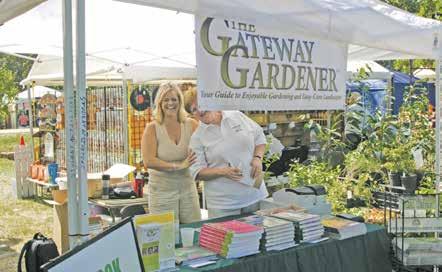
Gateway Gardener co-founder Joyce Bruno shares a moment with Landscape and Nursery Association member Maggie Jackson at our Gateway Gardener booth at the LNAGSL’s “Green Village” at Kirkwood’s Green Tree Festival in 2006. It was our pleasure to meet with and share information with people at dozens of events throughout the years.
have dedicated themselves to countless other floral displays and public gardens to help make the region more colorful and environmentally improved. Finally, the many garden clubs around our region often have local parks and other public areas that their members volunteer to install and maintain year after year. I’ve been blessed through The Gateway Gardener to have seen these programs and people, and shared them with our readers.
The Green IndusTry and ITs PeoPle
Through The Gateway Gardener, I’ve been fortunate to meet most of the region’s green industry leaders. And I’ve said to countless people countless times, it’s been a blessing to work with so many truly nice people. There is something about plant

Cottage Garden, operated for years by Chris and Bill Kelley near Piasa, Illinois, was an excellent example of the unique and well tended plant offerings one can find at many independent garden centers.
people—both those volunteers in organizations such as those mentioned above, and the business people who have devoted their lives to nurturing plants, whether in garden centers and nurseries, or in landscapes—that draws good folks!
Since that first issue in 2005, I’ve committed the magazine’s efforts toward promoting the local independent garden centers and nurseries. Some specialize in certain types of plants. All offer gardeners more expertise, a greater selection of plants, and plants that were chosen for proven ability to grow well in our region’s challenging weather and soil conditions. I wish I could mention them all, but suffice to suggest that, if you have limited yourself to big box plants in your garden, do yourself a favor and check out the garden centers and nurseries whose ads you’ll find in these pages.
One of the most satisfying perks of publishing The Gateway Gardener has been when someone comes up to my booth at a garden expo, or writes a note along with their subscription renewal, telling me how much they love the magazine. It happens a lot! Thanking them, my first response is to divert the praise to the people most deserving, the professional plant people who share the expert advice found in our pages. Through the years, many of the area’s most experienced plant people have offered up the fruits of their gardening wisdom for one reason: they want people to be successful gardeners so they won’t become frustrated and throw in the trowel, so to speak. I’ve been blessed with the industry’s best! I would like to remember some who have graced readers with their advice through the years.
Cindy Gilberg, who passed away in 2014, was a legend and pioneer in the region’s native and perennial plant world. Her articles for us focused on Missouri native plants and native gardening. One time when I dropped her column for space reasons, I was informed by several readers that I could skip other writers, but Cindy’s pieces were to be untouchable!
Cindy’s mother, Barbara Perry Lawton, was also a muchappreciated fixture in our pages for many years. It was our honor to have Barbara write for our magazine, as she was already a

For years Gateway Greening (now Seed St. Louis) presented “Solstice with the Stars”, an industry event that provided an opportunity to meet luninaries of the local green industry. Many of them wrote for The Gatway Gardener. Left to right, Chris Kelley, Barbara Lawton, Chip Tynan, June Hutson and Ellen Barredo, at the 2010 event at Greenscape Gardens and Gifts.
much accomplished garden writer for local newspapers and with several published gardening books to her name. Barbara passed away in 2017.
June Hutson was the longtime curator of the Kemper Center for Home Gardening gardens at Missouri Botanical Garden. She was known to many St. Louis gardeners for her seasonal appearances with Chip Tynan, the Garden’s “Answer Man” in charge of the Horticulture Answer Service, on local radio programs. She also taught classes frequently to the general public and Master Gardeners. Many of us learned how to plant attractive containers by using her simple “Thrillers, Fillers and Spillers” design tips, which she occasionally shared in our pages. June passed away in 2021.
Other local horticulture heros who have inspired gardeners with their tips and advice include Chris Kelley, former proprietor of Cottage Gardens; Doug Wolter, retired head of Horticulture for the St. Louis County Parks Department and tireless advocate of that group’s Children’s Garden Club; Ellen Barredo, a longtime and highly regarded perennials expert for various nurseries who wrote on that topic; Diane Brueckman, Missouri Botanical Garden Rosarian for many years, who kept our rose enthusiasts up to date on rose varieties and growing tips; and Mary Ann Fink, who introduced readers for years to the MBG Plants of Merit lineup for years. I miss them all and thank them for helping set a high standard of writing and plant wisdom that continues to be reflected in their successors.
The Places I’ve Been, The ThInGs I’ve seen
In addition to meeting a lot of great people, the last 20 years have also afforded countless opportunities to attend incredible events, tour amazing gardens and to participate in so many wonderful experiences.
There have been many conventions and symposiums over the years that not only offer chances to gain knowledge from renowned plant professionals, authors, speakers but have often included behind-the-scene tours of growing facilities, public and private gardens, plant science centers and other enriching opportunities. I’ve had booths at dozens of annual garden expos and sustainability events that not only have allowed me to mix and mingle with the other exhibitors, but also meet many readers face-to-face. And I’ve taken advantage of dozens more opportunities to visit the beautiful home gardens found on the annual garden tours presented around town.
These last 20 years have gone by in a flash. I hope The Gateway Gardener will continue to help regional gardeners for years to come. For now, thanks are in order. Thanks to all the advertisers who have chosen us as partners in their marketing efforts. Thanks to the awesome group of contributors who have donated their gardening knowledge to our pages. Thanks to Michael and Elizabeth Cavanaugh, publishers of The Kansas City Gardener, for leading the way with their business model and generous advice 20 years ago and since. Thanks to my wife, Mary, for keeping the bills paid and for her patience and steadfast moral support. And thanks, especially, to you readers for your continued interest and your many kind comments through the years. As always I wish you...
By Carrie Coyne

In an era marked by environmental challenges and a widening gap between people and the natural world, the Horticulture Program at St. Louis Community College’s Meramec campus stands as a community leader in the green industry. The campus recently completed a major renovation phase, including $7.5M in upgrades to the program’s horticulture facilities. This fall, the program will showcase these transformative changes with an open house and will launch an annual symposium designed for the public, students of horticulture, and the green industry. The STLCC Horticulture Program was established as a Career and Technical Education program in the late 1960’s, offering students an Associates of Applied Science degree. The program’s focus, as it remains today, was to teach students the art and science of growing and caring for plants, and applying that knowledge to hands-on experiences in both classroom and laboratory settings. Over time, a Certificate of Proficiency was added as an option, and enrollment has continued to grow, now nearing 200 students.
Over the decades, the Horticulture Program has earned a reputation as one of the region’s most respected training grounds for horticulture professionals. Alumni have gone on to become leaders in prominent public gardens, municipal park systems, research greenhouses, crop production centers, and landscape design firms throughout the St. Louis region. The program has long maintained active partnerships with organizations such as Shaw Nature Reserve, Missouri Department of Conservation, the Donald Danforth Plant Science Center, Grow Native, Seed St. Louis, Landscape & Nursery Association of Greater St. Louis, Bellefontaine Cemetery, and many area municipalities, providing students with valuable internship and employment opportunities. Its graduates have helped shape countless public spaces, private gardens, and natural areas that regional residents enjoy today. As an applied science, horticulture requires specialized, handson learning environments. Over time the greenhouse and lab spaces for this thriving program had become stretched thin, limiting program capacity and restricting curriculum updates. Meanwhile, the green industry was rapidly evolving, expanding into areas such as native plant horticulture, cannabis
production, hydroponic growing, stormwater management, and urban farming. These sectors are responding to some of the most pressing environmental and economic challenges facing communities today including climate change, biodiversity loss, and the need for sustainable food systems. In particular, native plant horticulture and green infrastructure practices have seen increased adoption as local regulations requiring natural stormwater management have increased. At the same time, the use of technology in horticulture from controlled environment agriculture to data-driven irrigation and lighting systems has accelerated, outpacing what the program’s existing facilities could provide. The college’s investment in new horticulture facilities ensures that graduates of the program are prepared to meet these modern industry demands head-on.
In 2021, voters in St. Louis City, St. Louis County, and parts of Franklin and Jefferson counties said “yes” to a tax increase supporting the STLCC Transformed initiative. This referendum funded major infrastructure improvements, modernized classrooms, and provided for the construction of new, modern facilities across all four STLCC campuses. Thanks to this voter investment, the Meramec Horticulture Program is now benefiting from state-of-the-art classrooms, greenhouses, an indoor growth

chamber, and much more!
With STLCC Transformed, the college has invested heavily in its Career and Technical Education programs, and Horticulture has been a significant beneficiary. Horticulture’s modernized spaces now include:
• Greenhouses with automated climate controls, high efficiency irrigation systems, LED lighting, and additional square footage. These new spaces will support more diverse classroom activities and real-world experiences.
• Laboratories with updated equipment and technology will support classes such as Soils, Plant Propagation, Micropropagation, Cannabis and Hemp Production, and Cannabis Extraction Methods. New labs will also include space to learn hydroponic growing methods.
• An Indoor Growth Chamber will provide students experiences such as managing a state-ofthe-art controlled-growth environment, learning regulate temperature, lighting, humidity, and CO2 while collecting data from experiments using industry-standard technology.
• A Laboratory Prep Space will support the development of higherquality lab experiments and enhanced student learning.

New laboratories will include updated equipment and technology.
• Workspaces for adjunct instructors, full-time staff, and part-time team members will ensure everyone in the Horticulture Program has the tools, resources, and collaborative space they need to support students and program operations.
• An Urban Farm featuring a high-tunnel, paved access, ADA-accessible planting beds, permanent deer fence, and reliable water access will create a sustainable, efficient, and inclusive teaching environment for urban farming principles.

A new growth chamber provides students with a state-of-the-art controlled growth environment and industry-standard tech.
• A Green Roof atop the new first-floor laboratories will offer students practical experience managing an intensive green roof system in a publicly accessible, highly visible setting.
• Bioswales, rain gardens, and other green infrastructure elements are being constructed across the Meramec campus to meet Metropolitan Sewer District and L.E.E.D (Leadership in Energy and Environmental Design) requirements. These will provide students with opportunities to learn best management practices of these high functioning landscapes which are rapidly increasing in use throughout the St. Louis region.
Together, these new spaces represent more than just updated facilities—they reflect a visionary, forward-thinking commitment to horticulture education and the evolving needs of today’s green industry. With innovative labs, modern greenhouses, and dynamic
hands-on learning environments tailored to emerging trends, STLCC is investing not only in infrastructure, but in students, the community, and the regional workforce. It boldly positions STLCC’s Horticulture Program as a leader in horticulture education for the St. Louis region and beyond, ensuring graduates are prepared for meaningful, in-demand careers across the diverse field of horticulture.
Carrie Coyne is Horticulture Program Facilitator for St. Louis Community College.
For information regarding the Horticulture Program, contact Jerry Pence, Program Coordinator, at jpence@stlcc.edu or 314-984-7374.
To celebrate this exciting new chapter, the Horticulture Program is hosting two events this fall to welcome and share with students, the green industry, alumni, and surrounding communities:
Horticulture Program Open House | October 10, 2025, | 4:00pm to 7:30pm | Emerging Technology Center.
This free event (with registration) invites members of the St. Louis green industry workforce, alumni, neighbors, and prospective students for self-guided tours of the new facilities. Guests can meet instructors and staff, enjoy light refreshments, and connect with fellow plant enthusiasts and professionals.
STLCC HortiCULTURE Exchange | October 11, 2025, | 8am-12:30pm | Meramec Theater

Keynote speaker Doug Tallamy.
This inspiring half-day event will feature keynote speakers Doug Tallamy and Austin Eischeid, who will offer fresh perspectives on the evolving horticulture field. Attendees will have opportunities to exchange ideas, explore sustainable landscape practices, and engage with others passionate about plants and ecological stewardship. A continental breakfast is included, and registration is $45.
Proceeds from the HortiCULTURE Exchange will support the ongoing transformation of our outdoor Garden Classroom, ensuring this vital teaching space becomes just as dynamic as our new labs, greenhouses, and learning facilities.
We hope you’ll join us in October to explore our new spaces, meet the people shaping the future of horticulture in St. Louis, and celebrate the green industry’s growing role in our community.
To learn more about these events, RSVP, or donate to the Garden Classroom, visit: www.stlcc.edu/exchange

After 14 years of celebrating water in the garden on Manchester Road, Chalily is moving and expanding!
The one-stop pond shop is headed west to the former Fahr Greenhouse on Saint Albans Road in Wildwood, Missouri. While the property hasn’t operated as a nursery in recent years, it holds a rich family-owned horticultural history, and Chalily is excited to bring new life to the space.
Since opening in 2011, Chalily has focused on providing healthy, happy aquatic plants and fish, along with fountains, unique garden décor and everything needed to build a thriving water garden. The shop has become a welcoming destination for expert advice, creative ideas and hands-on help for gardeners of all kinds.

The new location offers more than five times the room to grow. That extra space means Chalily can expand its plant selection, grow more varieties on-site and introduce new features, décor and events. Customers can expect plenty of room to explore and
get inspired.
Chalily’s move also honors the long-standing family tradition of the Fahr Greenhouse, which served the area for decades. Combining this plant-growing heritage with Chalily’s passion and expertise creates an exciting future full of growth and endless pondside possibilities.
Current plans are for the new facility to be unveiled with a grand reopening in Spring 2026. Watch for more news later!
Planting the Future: How MNSS is Growing Missouri’s Native Legacy

Missouri Native Stewardship Services (MNSS) is a new, ecological restoration landscape focused company. MNSS is based in St. Louis, servicing Missouri, Central Illinois (and more). Founded in March 2025 by Lisa G. Ross and Charles G. Caverly an ISA Certified Arborist, Botanists and Grow Native! Certified Professional. MNSS combines practical experience with a deep passion for restoring native ecosystems.
This brand-new venture is backed by a team of wildlife biologists, conservationists, horticulturists, and sustainability-minded professionals. Together, they share one mission: to bring back the natural beauty and function of Missouri’s native landscapes— supporting pollinators, birds, and the health of the land itself.
Whether helping a homeowner convert a traditional lawn into a vibrant pollinator garden or transforming neglected ground into native prairie, MNSS offers thoughtful, customized solutions.
The team also works on larger-scale projects with landowners, nonprofits, and municipalities who are serious about long-term stewardship.
At MNSS, it’s not just about planting—it’s about creating lasting change through smart, native-focused design. They’re passionate about helping people reconnect with the land, starting right in their own
backyards.
As a brand-new business, Missouri Native Stewardship Services is excited to connect with clients who want to be part of something meaningful from the ground up—literally.
To learn more or get in touch, visit www.mo-native. com , email: info@mo-native.com , phone: 314-764MNSS (6677)
Follow on Facebook, Instagram & LinkedIn
Area Green Businesses Help Tornado Clean Up and Reforesting


A Forest ReLeaf intern (right( works with a Shaw Nature Reserve volunteer to remove damage debris.
Forest ReLeaf of Missouri also provided us with this report: “Thousands of trees, stretching from Forest Park to O’Fallon Park and through dozens of neighborhoods in between, were lost in the May 16 tornado, changing the landscape overnight. In the immediate aftermath, resident safety and debris removal were the top priorities. Local nonprofits including Forest ReLeaf of Missouri, Missouri Botanical Garden, Great Rivers Greenway, Seed St. Louis, Open Space Council, and many others joined city staff, contractors, and volunteers to clear the damage.
When the devastating spring storms tore through parts of St. Louis City and County, many area arborists, landscapers and other green industry businesses donated their hours and skills to help the cleanup effort. Here are a few stories that have come our way.
Big trees were barely missing small houses of worship in north St Louis, where two tornadoes roared and ripped through. “I asked God to guide me and happened on sites such as this,”said Wendell Phillips Berwick, owner of Living Tree Care. “There was just so much that churchmen could do with their smaller saws. The hollow silver maple was closer to the church. It barely bent a railing. We rock and rolled trunk and root ball and all to the parkway. FEMA was getting everything that was put on the parkway. The pastor in the light blue shirt had us hold hands and pray, not the only prayer I got to partake in that day. I missed a men’s retreat that day, but had a broken trees retreat instead.”
“Now, as the initial emergency response winds down, the years-long process of replanting begins. Forest ReLeaf, in partnership with St. Louis City Forestry, is working with residents and local leaders to plan phased planting projects that will restore the critical shade, stormwater management, air purification, and beauty the lost canopy once provided.
“Beginning this fall, volunteers will plant clusters of new trees in parks along the storm’s path including hundreds of trees in Forest Park. Community engagement is underway to ensure planting plans reflect neighborhood priorities, and resources are being secured to support ongoing watering and stewardship, giving these new trees the best chance to grow and thrive for generations to come. A reforestation plan is being planned for O’Fallon Park with community volunteer planting opportunities next spring.”
Meredith Perkins of Forest ReLeaf also reminded us that the cities of Clayton and Richmond Heights were significantly affected by the tornadoes of May 16th. She noted that forestry professionals in both those communities provided an exceptional response to the damage and recovery in their areas.

Updates to this information are often posted on our online events calendar at GatewayGardener.com, so check there for the latest details.
Give us the details of your upcoming gardening, lawn or landscaping event and we’ll add it to our website and include it in our next issue. Deadline for printing in Winter issue (November-February) is October 1st.
How to reach us: Mail: PO Box 220853, St. Louis, MO 63122 Email: info@gatewaygardener. com
Sept. 6th
9am—St. Louis County Parks and Recreation Children’s Garden Club: The Power of Pollinators. FREE. Greenscape Gardens & Gifts, 2832 Barrett Station Rd., Manchester, MO, 314-821-2440. Pre-registration is required on the St. Louis County website at https://tinyurl. com/5n6zx9ex or by calling 314-615-4386.
Now through Sept. 26th
Brightside St. Louis Bulb Sale.
Now is the time to order your Brightside bulbs. Visit www. Brightsidestl.org to view bulbs and submit an order or print out a mail-in order. Or call (314) 772-4646 before Sept. 26th. Orders will be available for pickup at the Forest Park Greenhouse on Oct. 10th from 11am-4pm, and on Oct. 11th from 9am-noon. Shipping orders will be ship the week of Oct. 6th
Sept. 5th
3-7pm—Fall Wildflower Market. Talk to native plant experts and shop from a wide selection of native plants suitable for all conditions. Cash and checks, some vendors take credit cards. Shaw Nature Reserve, Glassberg Pavilions 307 Pineton Loop, Gray Summit, MO. For more information visit shawnature. org.
Sept. 6th
10am—Living Succulent Wreath. Join us to create a stunningly unique living succulent wreath. Hang your new living décor in your home to add charm to any space. $35.00. Event location and registration: HoffmannHillermann Nursery & Florist, 636-239-6729, www.hillermann. com.
Sept. 13th
9am-1pm—Godfrey Native Plant Sale The Missouri Prairie Foundation will hold a native plant sale organized in partnership with The Nature Institute, 2213 S. Levis Lane, Godfrey, IL 62035.Grow Native! professional member vendors at this event include Green Thumb Nursery, River City Natives, and Sam’s Native Nursery. Native plants will also be sold by The Nature Institute. All vendors will donate a portion
of their sale proceeds to benefit the conservation work of the Missouri Prairie Foundation. Some vendors accept cash, check, or credit cards; some only cash or checks. Shoppers may begin browsing product selections, making purchases, and picking up pre-orders from each vendor at the advertised start time. “Early birds” will be asked to wait until the advertised start time to begin shopping. Shoppers may be able to pre-order plants and have their orders ready for pick up at the event. Shoppers are encouraged to bring their own crates or boxes for transporting their purchased plants home. Volunteers may be available to load plants into vehicles for those needing assistance.
Sept. 13th
2pm—Plant and Sip. Come hang out at the potting bar and plant your own low maintenance Succulent Dish Garden and enjoy local wine from Augusta Winery. $50.00. Event location and registration: HoffmannHillermann Nursery & Florist, 636-239-6729, www.hillermann. com.
Sept. 19th-21st
3-5pm Fri., 9am-5pm Sat., 10am-2pm Sun.—22nd Annual Northern Midwest ZNA Koi Show & Pond Expo. The event will be held at Timberwinds Nursery in Ellisville, MO and is open to the public with free admission. There will be raffles, attendance prizes, koi judging and speakers on various topics of ponding and gardening Saturday, along with the judges’ talk and tour of the tanks on Sunday. Show koi will be removed from tanks for transport home on Sunday at noon. Koi, goldfish and pond & garden-related vendors will be open all three days.
Show schedule is available on www.nmzna.net and www. gatewaykoiandpondclub. org. Come enjoy the beautiful living jewels of Japan! Fun for the whole family! Outdoor event-rain or shine! Gateway Koi and Pond Club hosts monthly educational meetings and fun events. Check us out on the website above and on Facebook! Or call 314-2769461.
Sept. 20th
10am—Mounted Orchid. Make your own wall hanging mounted orchid and learn in depth care tips and tricks! Then find the perfect spot in your home to display your new eye-catching mounted orchid plant. $45.00. Event location and registration: HoffmannHillermann Nursery & Florist, 636-239-6729, www.hillermann. com.
Sept. 21st
10am-2pm—Bring Conservation Home Expo and Native Plant Sale. Native plants, native plant-themed art from local artists, bird and bat houses, info exhibits and activities for all ages. Tower Grove Park, Roman Pavilion, 4378 Northwest Dr. 63110.
Sept. 24th-26th
Missouri Community Forestry Council Annual Conference. Holiday Inn St. Louis SW-Route 66, Sunset Hills, MO. Attendees will gain insights into innovative research, practical applications, and emerging best practices that enhance how we assess, manage, and sustain our urban and community forests. Local experts will showcase realworld projects, demonstrating how research and practice come together to create healthier, more resilient urban forests. Whether you’re an arborist, urban forester, researcher, or advocate, this conference offers a unique opportunity to connect with experts, discover
practical applications of the latest science, and enhance your ability to care for the landscapes that define our communities. For more information and to register, visit https://conta. cc/4otMzbd.
Sept. 25th
3:30-6:30pm—Native Plant Sale. Missouri Prairie Foundation. Roeslein & Associates, 9200 Watson Rd., St. Louis, MO.
Sept. 27th
10am-3pm—Pollinator Palooza. Missouri Pollinator Network. Native plants for sale and informational vendors and activities. Weldon Spring Site Interpretive Center, 7295 MO94, St. Charles.
Sept. 27th
10am—Mini Carnivore. Create the perfect mini terrarium to help your very own carnivorous plant thrive in your home. $30.00. Event location and

registration: HoffmannHillermann Nursery & Florist, 636-239-6729, www.hillermann. com.
Sept. 28th
Garden Tour 1=5pm, Reception and Art Display, 5-7pm— Plein Air Art Festival and Garden Tour. Visit gardens in the historic districts of U Heights #3, The Theodore Link Historic District, West Portland, and Phoenix Heights. Benefits the beautification work of U. City in Bloom. Heman Park Community Center, 975 Pennsylvania Ave. 63130. Tickets $25. Visit UCityinBloom.org.
Oct. 3rd-4th
Fri. 3-7pm, Sat. 9am-noon— Neighborhood Plant and Rummage Sale. Join us for a fun filled days of bargains and blooms. Plants are divided from members’ gardens. Perennials, natives, bulbs, houseplants and more. Gently used treasures,
tools, garden gear and home goods. Funds go toward club’s community projects. Sponsored by O’Fallon (MO) Garden Club. 46 Spangle Way Dr., O’Fallon, MO 63366.
Oct. 3rd-5th
9am-7pm Friday, 9am-5pm Sat. and Sun. (8-9am Sat. members only)—Best of Missouri Market. Handmade artisan and craft items, and food, mostly from Missouri artists and producers, including native

plants from Missouri Wildflower Nursery. Missouri Botanical Garden, 4344 Shaw, St. Louis.
Oct. 10th-11th
Open House and Horticulture Exchange 2025. See article on page 19.
Oct. 12th
10am-2pm—Sustainability Fair & Native Plant Sale Church of the Open Ward, 1040 Dautel Lane, St. Louis, MO 63146.

Louis Community College
Open House
Friday, Oct. 10 | 4-7:30 p.m.
Explore our new, state-of-the-art labs and greenhouses. Free to attend with registration!
HortiCULTURE Exchange 2025: Transforming Community Saturday, Oct. 11 | 8 a.m.-12:30 p.m.
Attendees will hear from Doug Tallamy and Austin Eischeid, and have the opportunity to connect with students, industry and community friends.
$45 (includes continental breakfast)

For details and registration, visit stlcc.edu/exchange or use the QR code.



The 23rd Northern Midwest ZNA Koi Show hosted by Gateway Koi and Pond Club
SEPTEMBER 19, 20 & 21, 2025 Fri. 3-5pm, Sat. 9am-5pm, and Sun. 10am-2pm
TIMBERWINDS NURSERY 54 CLARKSON ROAD ELLISVILLE, MO 63011 U.S.A.
www.nmzna.net, www.gatewaykoiandpondclub.org or call +1-314-276-9461
Media Sponsor: Main Show Sponsor: ZNA Japan/ZNA America



